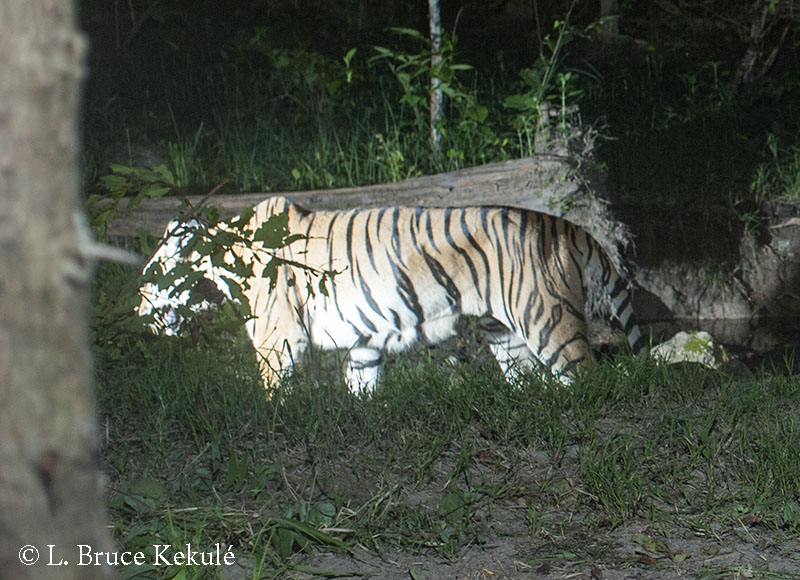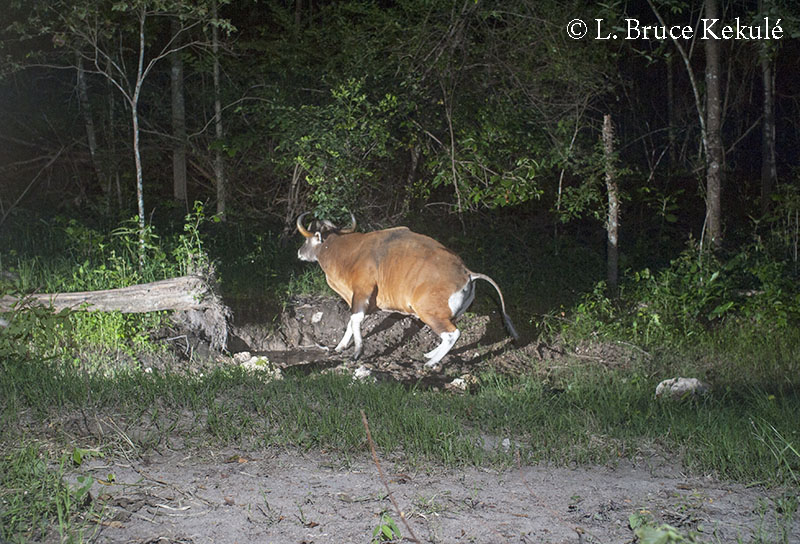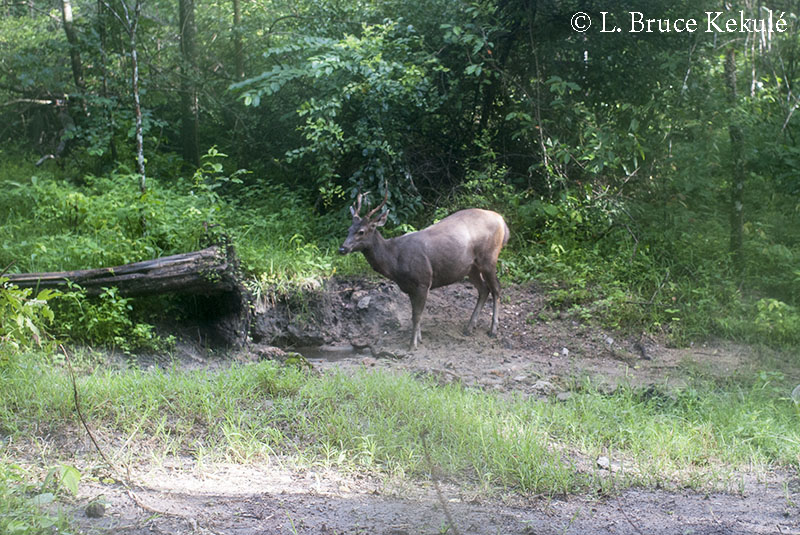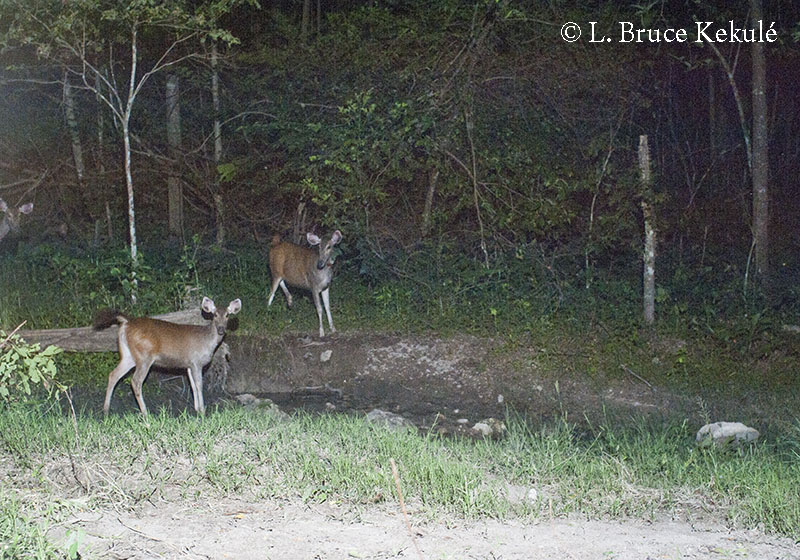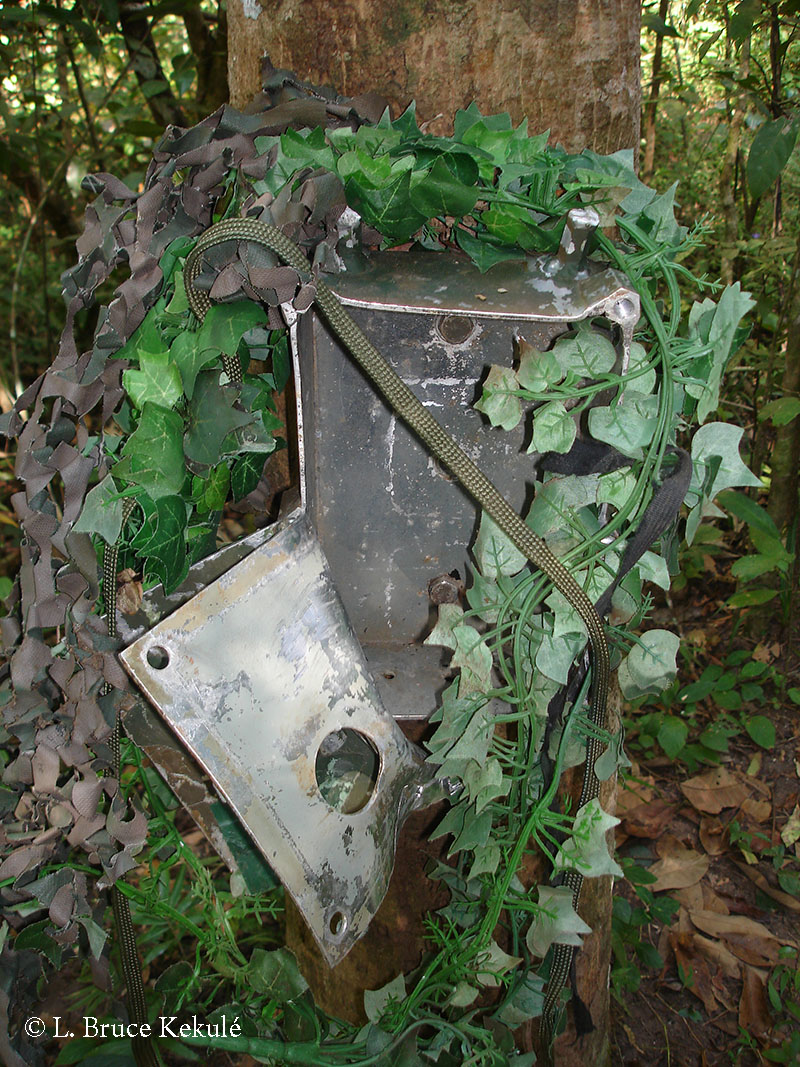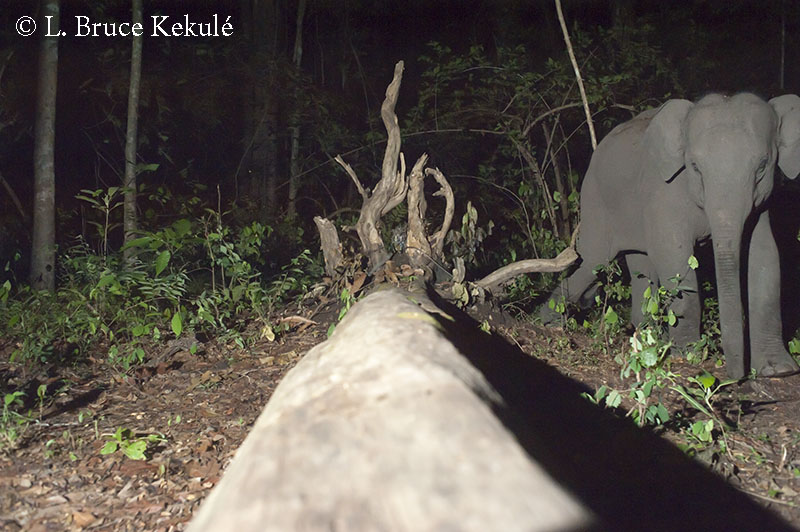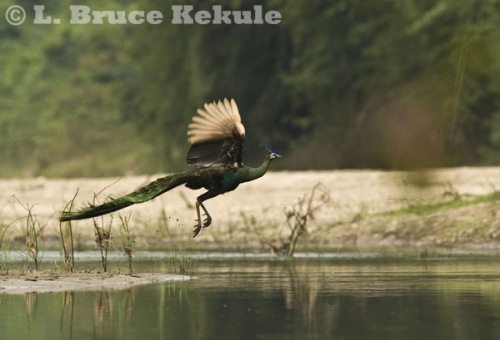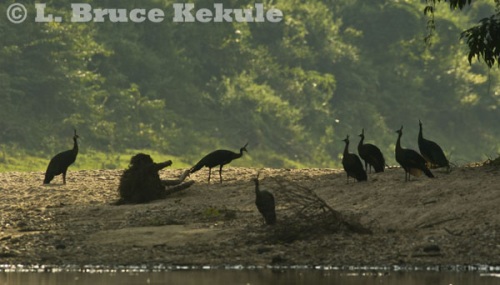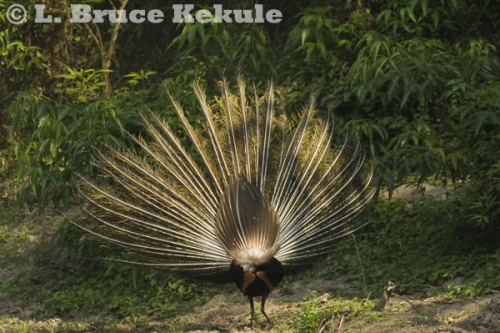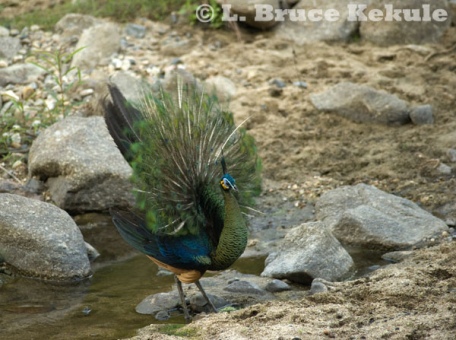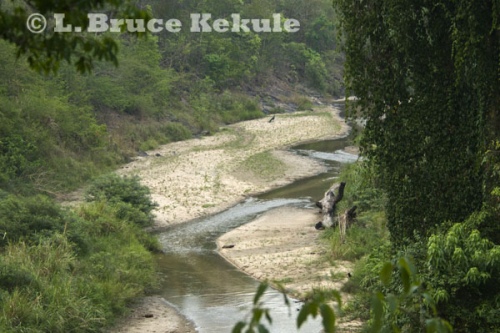Posts Tagged ‘peafowl’
Camera trap videos in Huai Kha Khaeng Wildlife Sanctuary
Early in 2011, I set several camera traps and video units including a Bushnell Trophy Cam around a mineral deposit and water hole visited by wild animals including wild pig, banteng, sambar, tiger, gaur, peafowl and crab-eating mongoose plus more. This is a collection of video clips from the Bushnell captured over the course of one month from January to February.
Green Peafowl: Thailand’s most spectacular bird
WILD SPECIES REPORT
Beautiful avian fauna thriving in a few protected areas
Green peafowl taking-off in Huai Kha Khaeng
It is a dark misty cold morning along Huai Kha Khaeng, an important waterway in central-western Thailand. The month is November at the beginning of the winter season and the temperature is hovering around 10 degrees Celsius. I’m sitting in my boat-blind with a silent electric trolling motor waiting for the sun to come up, and I’m after wild water buffalo and green peafowl hoping for some good photographs of these two rare species.
At dawn, a green peafowl calls out from its roost reverberating through the valley. The resounding braying can be heard repeatedly many kilometers away. It is nature at its finest that has gone on for thousands of years. I motor the boat closer and find a flock of peafowl pecking the ground by the river and looking for anything edible.
Green peafowl flock by Huai Kha Khaeng in late afternoon
As light begins to fill the river valley, I move in closer to the peafowl on a large sandbank. A male takes-off and lands close to the flock immediately opening up its tail in a shimmering fan display. The females and younger birds are busy pecking the ground.
During the breeding season, the male peafowl’s iridescent tail called a train, are long and graceful. He struts along the riverbank showing off to the females hoping to impress the flock. Several other males are nearby also flaunting their tail spreads to incite the other gender.
Green peafowl male by the Huai Kha Khaeng in early morning
The blue and yellow facial skin, plus the emerald green and metallic blue of its feathers with cinnamon colored wing primaries contrasting with brownish-black secondaries is a sight to see, especially during the soft early morning light and again in the evening glow at sunset. They are the most spectacular of all Thai birds thriving fairly well in this wildlife sanctuary, a World Heritage Site. The species can also be found in a few other protected areas around Thailand.
Green peafowl male by the river in Huai Kha Khaeng
Birds evolved from dinosaurs: there is no doubt about that. The evolution of birds probably began about 150 million years ago. The earliest known bird was Archaeopteryx, which was the size of a modern crow and lived in the Late Jurassic. Fossil evidence found in Germany indicated it had feathers arranged over its body and its wings; and though not as agile as a modern bird, could probably fly well. It also had a dinosaur’s jaws with teeth, claws on its hands, and a long reptilian tail.
Throughout the succeeding Cretaceous period all kinds of dinosaur-bird hybrid animals existed, but their exact relationships to one another are not really known. In the 1980s and 1990s fossils of these animals began to be discovered in South America, Spain, and particularly in China. However, there have been no discoveries of these bird-like creatures in Thailand, but more than 15 species of dinosaur have been uncovered here.
Green peafowl male flaunting its tail spread
Green peafowl probably evolved from red jungle fowl, the ancestor of all wild and domestic fowl. Jungle fowl is believed to have come to being some 800,000 years ago. It is not exactly sure when peafowl came about but it is thought to be sometime around 500,000 years ago.
Red jungle fowl in Huai Kha Khaeng – western species
Red jungle fowl in Khao Ang Rue Nai – eastern species
King Rama V wrote about seeing green peafowl at Muang Sing in Sai Yok district of Kanchanburi province during a Royal visit there. Rock paintings discovered in Lampang province in the North about 3,500 to 5,000 years old show a peafowl with long tail-feathers on a cliff-face. These majestic birds have been featured in many stories and legends throughout the history of the Kingdom.
Rock painting showing green peafowl 3,500-5,000 years old in Lampang
The green peafowl, also called Javan peafowl, Pavo muticus is a large galliform bird found in the tropical forests of Southeast Asia. It is the closest relative to the Indian peafowl or blue peafowl Pavo cristatus, which is mostly found on the Indian subcontinent. Peafowl are smaller than the American turkey.
In the past, the distribution and habitat of the green peafowl was widely scattered, from eastern and northeast India, northern and southern Myanmar, and southern China extending through Laos, Thailand, Cambodia, Vietnam, Peninsular Malaysia and the island of Java. These ranges have been drastically reduced through habitat destruction and hunting.
Green peafowl male and flock at Huai Hong Krai Royal Project in Chiang Mai
According to J.H. Riley with the Smithsonian Institute who published ‘Birds from Siam and the Malay Peninsula’ in 1938 reported green peafowl could be found in most forested areas and alluvial rivers in Thailand. There are two sub-species: the Pavo muticus muticus south of the Isthmus of Kra, and P. m. imperator to the north. Unfortunately, they have vanished from the Northeast and the South, and from Malaysia. The Burmese P. m. spicifer is a more drably colored bird.
One person who has researched green peafowl in depth is Professor Wina Meckvichai with the Department of Biology at the Faculty of Science, Chulalongkorn University in Bangkok. She has studied populations and behavior of the peafowl, and other gallopheasants like red jungle fowl in the country.
Young male peafowl by Huai Mae Dee in Huai Kha Khaeng
Presently, there are about 2,000 wild green peafowl left in the country and most are in the western forest complex mainly in Huai Kha Khaeng and Thung Yai Naresuan wildlife sanctuaries, and Sri Nakarin National Park. They may also be found in other protected areas in the west but these would be small isolated populations.
Peafowl can also be found in the Northern provinces of Nan, Phayao and Chiang Mai. A few may survive in the Salaween Wildlife Sanctuary along the river and border with Burma, but there are not many reports whether the species exists west of here.
Juvenile peafowl late in the afternoon in Huai Kha Khaeng
The overall population of peafowl in the north is decreasing due to human disturbance but is slightly increasing in the west. However, at Huai Hong Krai Royal Project at Doi Saket district in Chiang Mai province, peafowl are also on the increase due to special protection provided by the project.
About 25 years ago, I saw a male green peafowl with long tail feathers during the breeding season in Sai Yok National Park, Kanchanaburi province by a tributary of the ‘Noi’ River deep in the interior. However, they have not been seen or heard here for years now.
Female peafowl in Huai Kha Kha Khaeng
Hunters have poached the birds for their meat and tail feathers, and wiped them out in many areas throughout the country due to increased access into the protected areas by local villagers and ethnic tribes people. Encroachment on forestlands has also been heavily responsible for the disappearance of this beautiful bird.
During most of the year, when the males have no visible trains, both male and female green peafowl are quite similar in appearance, and are difficult to distinguish between the two. Both sexes have tall pointed crests, and are long-legged, heavy-winged and long-tailed in silhouette. The long train formed by elongated upper tail coverts, spread in an enormous fan during display. These molt and drop out in April and May during the hot season.
Huai Mae Dee – green peafowl habitat in Huai Kha Khaeng
The peafowl’s peculiar flight has been described, as a true flapping flight with little gliding that is usually associated with other Galliform birds. With a wingspan of 1.2 meters across, peafowl are capable of sustained flight.
According to ‘A guide to the Birds in Thailand’ by the late Dr Boonsong Lekagul and the eminent ornithologist Philip D. Round, peafowl are found in several different habitats including mixed deciduous woodland, secondary growth and clearings usually close to shallow streams or rivers with exposed sand bars, plus foothills and plains, but occasionally higher plateau areas. At the time of publication in 1991, peafowl were considered a rare resident much reduced by human persecution. Peafowl adapted to a changed habitat in Huai Kha Khaeng and Thung Yai flooded by the Sri Nakarin Dam and reservoir in the west.
Green peafowl spend most of their time on or near the ground in tall grasses or sedges. They forage for food in open areas and along riverbanks. Family units roost in trees about 10-15 meters off the ground. The Green Peafowl is a forest bird that nests on the ground laying three to six eggs.
Their diet consists of fruits, invertebrates, reptiles and other small animals. Adult birds hunt for ticks, termites, flower petals, bud leaves and berries, and are also known to take poisonous snakes from time to time. Frogs and other aquatic small animals probably make up the bulk of the diet of growing birds.
Although rare compared with historic numbers, improved survey methodology and increased effort has led to an increase in the reporting rate and thus the population estimate has been revised upwards to reflect this improved knowledge. Nevertheless this remains a coarse estimate and it warrants refinement.
Continue research into its range, status, habitat requirements and interactions with people to inform management within the protected areas should be carried out. Peafowl require strict enforcement of regulations relating to hunting and pesticide used within the parks supporting populations in Indochina. A total ban should be encouraged on the international trade in live birds and tail feathers in all range countries.
Because of its attractive appearance, the green peafowl faces the threat of hunting or as pets. Its feathers are considered to be valuable art objects and are also popularly used in household crafts and decorations. It is listed on Appendix II of CITES, and before 2009, it was evaluated as ‘vulnerable’. The bird is now listed as ‘endangered’ on the IUCN Red List of Threatened Species. The world population has declined rapidly and the species no longer occurs in many areas of its past distribution.
As with all other wild birds and animals living in the protected areas, the green peafowl in Thailand is in a serious predicament. More and more people forage in the forest and along with this, poaching is a never-ending saga. Protection and enforcement is the number one priority for the government but recent protection budget cuts have been tabled which in the event go through, will seriously affect all wildlife and their ecosystems.
It is also said that many temporary rangers will be lose their job if these budget cuts go through, and to compensate them, a scheme has also been tabled where the rangers join forces in their respective villages, put in a bid to look after the forest similar to the community forest program, and then wait for the wheels of doing business here. This is the beginning of the end.
Corruption will certainly come into play and these jobless rangers who already know the forest, will slip into areas they know well and, poach and gather. There will be no unity within the ranks to properly maintain a good protection program. With big money, continued and expanding wildlife trading, and other dark political forces at work, plus an ever-expanding human population, it will be a rough road ahead.
It is unfortunate but the future of the green peafowl is in the balance, and if management, funding, protection and enforcement are not increased and improved, these spectacular birds will slowly and eventually go the way of the dodo in New Zealand and the carrier pigeon in the United States. The government of Thailand should do much more in taking care of the Kingdom’s great wild heritage.


